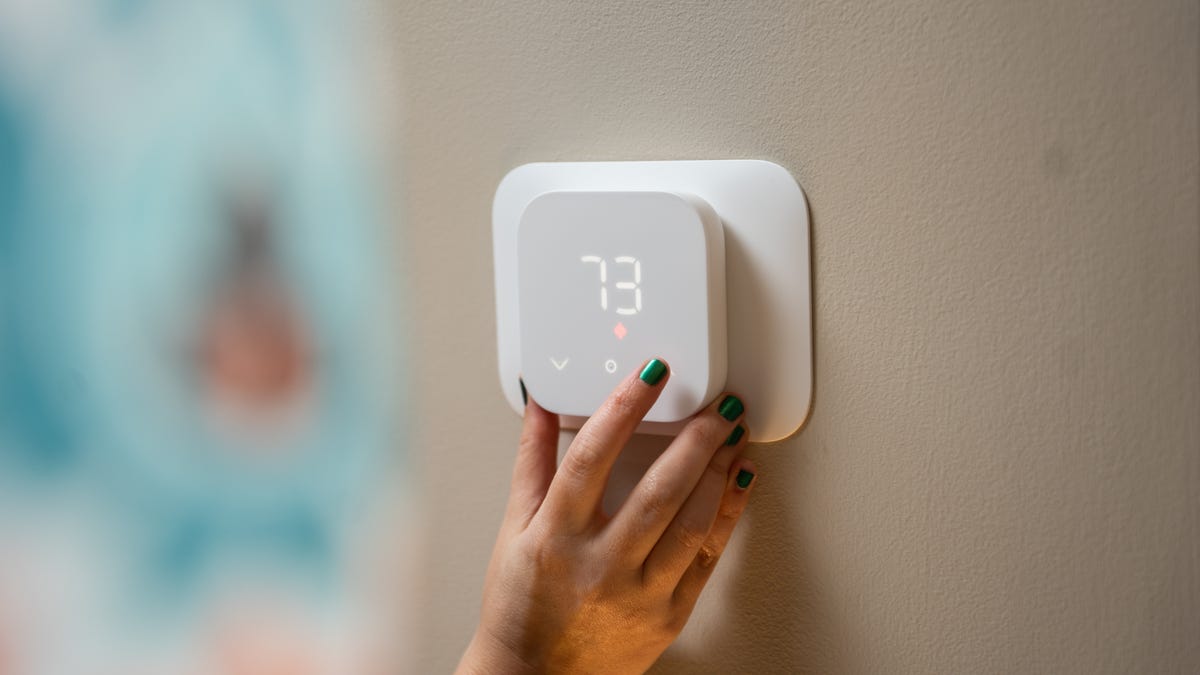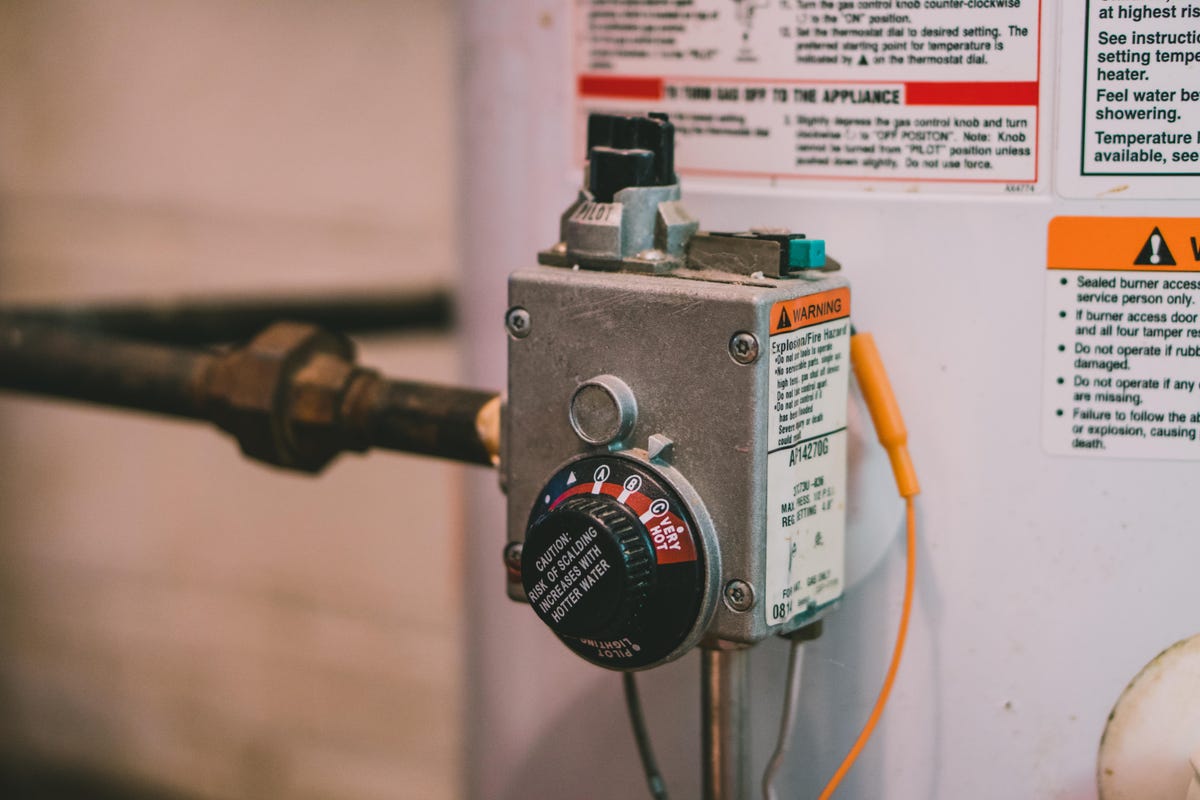Last year was one of the hottest summers on record, and this year might not be any different. That means we’re going to be turning down our thermostats with more frequency and urgency. With electricity and energy prices remaining high, you can expect to spend hundreds of dollars on utility bills each month, no matter how you cut it.
If those higher prices are starting to put a strain on your budget, you can start making changes to reduce the energy you use and cut down your bills. Even small habits like unplugging unused appliances, washing your clothes a different way, cooking with certain energy-saving appliances or setting your thermostat to the right temperature can save a bit of money and make your home more efficient.
Here are eight steps you can take to start saving electricity, gas, water — and cash. For additional money-saving tips, check out more on how to weatherstrip your home to save on bills and a simple home upgrade that can help you save on summer cooling costs.
1. Get an electricity audit
Many electric companies offer a free audit, where they do a room-by-room examination of your home and look at your electricity bills to help determine where you’re wasting energy. You can follow their recommendations to help reduce your electric bill. If you can’t get an audit for free, you might still be able to qualify it under the energy efficient home improvement credit and recoup the costs during tax season.
Even if your electric company doesn’t provide this service, you can easily perform a DIY home energy audit using the US Department of Energy website’s instructions.
Here Are 23 Ways to Save On Your Electric Bills Right Now
2. Adjust your thermostat
One of the simplest ways to reduce your electricity bill is to adjust your thermostat. According to the Department of Energy, you can save as much as 10% on your heating and cooling costs by adjusting your thermostat by 7 to 10 degrees for 8 hours per day. In other words, keep it a bit warmer in the summer and a bit cooler in the winter.
A simple way to do this is to adjust your thermostat when you’re either asleep or away from home. If you have a smart thermostat, you can preset your thermostat to adjust during these hours so you don’t forget.

Adjusting your thermostat a few hours a day can save you big on energy bills.
3. Turn down your water heater
Many water heater manufacturers set thermostats at 140 degrees Fahrenheit (60 C). But in reality, most households only need it set at a maximum of 120 F. Setting your water heater to a lower temperature can save hundreds of dollars a year.
Adjusting a water heater’s temperature is a quick and easy fix. The thermostat dial on your water heater is likely near the bottom of the tank on the electric or gas control valve. Be sure to check the owner’s manual for instructions to adjust it — and if you have any questions, consult a professional technician.

Adjusting your water heater can save electricity and reduce bills.
4. Turn off and unplug what you aren’t using

By leaving things around your house plugged in and turned on when you aren’t using them, you’re driving up your electric bill unnecessarily.
You can start by turning off lights when you aren’t in the room or when it’s light enough outside to rely solely on natural light. Lightbulbs consume 4 cents per hour for 40 watts (though the average American is likely to pay more). That amount only increases with the wattage of the bulb. While it doesn’t seem like much, it can certainly add up over time.
You can also save money by unplugging appliances you aren’t using. Phantom energy, the energy your appliances use when they’re plugged in but not turned on, can cost an average of $100 per year.
5. Use your dishwasher
It might sound counterintuitive to suggest running an appliance to save on your electricity bill. And yes, there was a time where dishwashers used far more water than they do today. But the Department of Energy regulates how much water modern dishwashers can use. Any dishwasher manufactured since 2013 is limited to using 5 gallons of water. If it’s a compact size dishwasher, it’s limited to 3.5 gallons.
You might think that surely you use less than 5 gallons of water to hand-wash your dishes. But the US Geological Survey estimates that it takes anywhere from 9 to 27 gallons of water to hand-wash a load of dishes. (If you’re curious, we’ve also got a tip on how to load your dishwasher the right way.)
6. Take advantage of off-peak rates
Electricity use tends to be higher during certain times of the day and the year. First, demand is higher in the winter and summer when people are running heaters and air conditioners. It’s also higher during the daytime and evening hours.
Some electricity companies offer time-of-use plans, increasing rates during peak hours and decreasing them during off-peak hours. If you have one of these plans, you can save money by running large appliances like your dishwasher and washing machine early in the morning or late at night.
7. Change your air filters
Your air filter helps to catch any dirt, dust, pet hair and more, preventing it from making its way into your HVAC. When you don’t change your air filters regularly enough, this debris gets into your HVAC system and bogs it down, reducing its efficiency. According to the Department of Energy, replacing your filters on schedule can lower your air conditioner’s energy consumption by anywhere from 5% to 15%. (Here’s how much you can save by changing your furnace filter, too.)
8. More ways to save on your bills
There are many steps, big and small, that you can take to reduce your consumption and save money on your bills. The Department of Energy has an entire section of its website devoted to providing tips to help you save on energy. And while plenty of them come with a price tag, there are many more just like those on this list that you can do for free.
For more, check out the ceiling fan trick that can help your house stay cooler this summer, and you can also explore our solar cheat sheet.




















+ There are no comments
Add yours